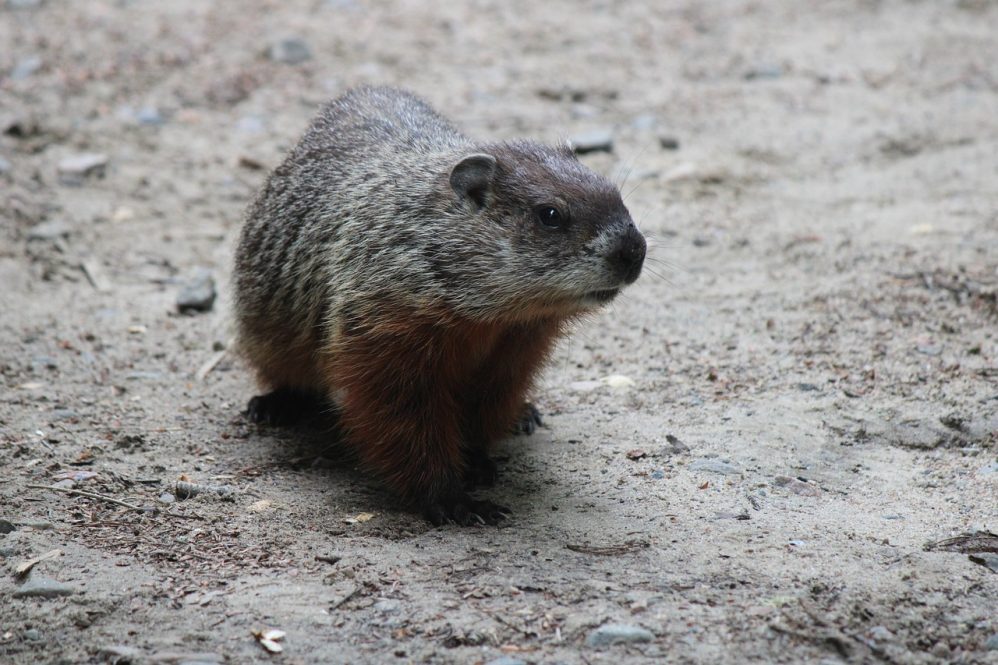James Brennan, Animal Care Services (ACS) program manager, has published a paper providing guidance on best practices for keeping woodchucks in laboratory research settings.

(Pixabay)
How much wood could a woodchuck chuck if a woodchuck could chuck wood?
The answer to this eternal question is "not much if they're provided with the right enrichment," according to an article published by James Brennan, Animal Care Services (ACS) program manager at UConn.
While woodchucks are most famous for their role as an annual weather oracle, they are also a rarely used laboratory animal. Specifically, scientists use them to study hepatitis B since the virus woodchucks contract closely resembles the human version.
Because woodchucks are so rarely used in laboratory research, unlike more common animal models like mice or zebra fish, there is little information about how to maintain woodchucks' wellbeing in a laboratory setting.
Brennan published an article in Laboratory Animal Science Professional, sharing his knowledge about wellbeing interventions for woodchucks.
"There's minimal information out there about care, about enrichment, about maintaining them - really anything," Brennan says. "So, I thought it would be helpful to share whatever information I had."
Brennan completed the work on which this publication is based while in a previous position with a pharmaceutical company. No current research at UConn uses woodchuck models.
With any kind of enrichment, it's important to consider the animal's species-specific behaviors and having that in mind can help you develop a great enrichment program. — James Brennan
Brennan researched woodchucks' natural behaviors and included enrichment props in their enclosures that allowed them to practice behaviors like foraging or burrowing.
"With any kind of enrichment, it's important to consider the animal's species-specific behaviors and having that in mind can help you develop a great enrichment program," Brennan says. "We used this same concept when designing a device to aid in routine study work. With the help of my dad, Jim Brennan, we fabricated simple everyday components [a 4-inch diameter PVC length along with an HVAC blast gate] to make a device they could go in, reducing stress to the animal and the user."
Brennan designed the enclosures for the animals himself since there are no commercially available cages for woodchucks.
One form of enrichment was the inclusion of huts in the woodchucks' enclosures where they could burrow.
"They did spend most of their time in there because they don't like being out in the open," Brennan says.
Brennan ensured the animals' social needs were met as well. This meant allowing the woodchucks to have visual contact with each other and having the option of physical contact with same-sex cage mates.
Brennan also made sure the woodchucks were provided with fresh fruits and vegetables to enrich their diets.
"We actually found that they didn't like the produce that we thought they would like, things you would find in your garden - cucumbers, carrots, lettuce - they didn't really care for," Brennan says. "What they liked were the more exotic fruits like pineapple and mango."
Brennan also gave the woodchucks access to standard enrichment toys like bones and balls. But, he says, they didn't pay much attention to these.
Brennan says that with these enrichment interventions, he did not observe any behaviors like pacing, aggression toward other animals or humans, self-harm, or vocalization that often indicate distress in other lab animals.
"We did not observe any behaviors indicating they weren't comfortable," Brennan says.
Brennan says his work is motivated by his compassion for the animals with which he works.
"We provided a good environment for great research data to be collected," Brennan says. "The animals experienced, in my opinion, minimal stress and they lived a happy life while they were with us."






